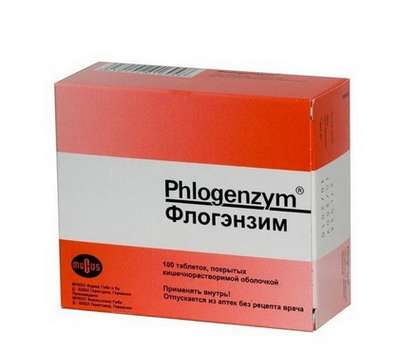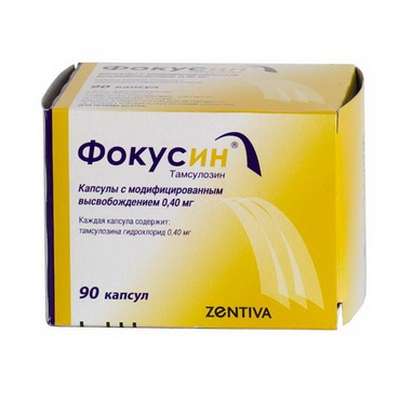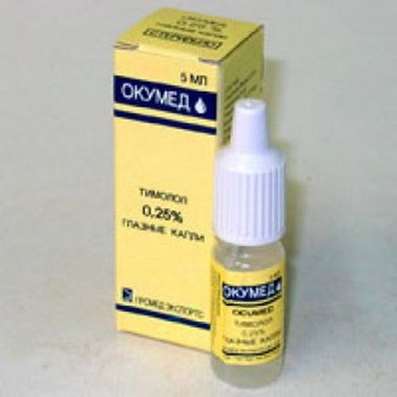Instruction for use: Allergoferon beta
I want this, give me price
Active substance Betamethasone + Interferon alfa-2b
ATX code S01BA06 Betamethasone
Pharmacological group
Glucocorticosteroids in combinations
Ophthalmic agents in combination
Nosological classification (ICD-10)
H10.1 Acute atopic conjunctivitis
Allergic conjunctivitis, Allergic eye disease, Allergic conjunctivitis, Allergic conjunctivitis is caused by chemical and physical factors, Allergic rhinoconjunctivitis,Allergic inflammation of the eye, Spring catarrh, Spring keratitis, Spring conjunctivitis, allergic Conjunctivitis, Perennial allergic conjunctivitis,Exacerbation of pollen allergy in the form of Syndrome rinokonyunktivalnogo, Acute allergic keratoconjunctivitis, Acute allergic conjunctivitis,Superficial bacterial eye infections,rhinoconjunctivitis, Seasonal allergic conjunctivitis, Seasonal conjunctivitis, Sennoz, Chronic allergic keratoconjunctivitis, Chronic allergic conjunctivitis
J30.1 Allergic rhinitis caused by the pollen
hay fever, Hypersensitivity to pollen, Polypoid allergic rhinosinusitis, Seasonal hay fever, rhinitis
J30 Vasomotor and allergic rhinitis
Allergic rinopatiya, Allergic rhinosinusopathy, Allergic respiratory diseases, Allergic rhinitis, nasal allergy, Seasonal Allergic Rhinitis, Vasomotor rhinitis, Long-allergic rhinitis, Perennial allergic rhinitis, Perennial allergic rhinitis, Year-round or seasonal allergic rhinitis, Year-round allergic rhinitis nature, Rhinitis allergic vasomotor, Exacerbation of pollen allergy in the form of Syndrome rinokonyunktivalnogo, Acute allergic rhinitis, Edema of the nasal mucosa, Edema of the nasal mucosa, Swelling of the mucosa of the nasal cavity, Swelling of the nasal mucosa, Swelling of the nasal mucosa, pollen disease, Permanent allergic rhinitis, rhinoconjunctivitis, rhinosinusitis,rhinosinusopathy, Seasonal allergic rhinitis, Seasonal Allergic Rhinitis, Haymarket rhinitis, Chronic allergic rhinitis, Allergic respiratory diseases
Composition
Eye and nasal drops 1 ml
Active substances:
Betamethasone sodium phosphate 1 mg
Interferon alpha-2b human recombinant at least 5000 IU
Auxiliary substances: benzalkonium chloride - 0.1 mg; Disodium edetate dihydrate 0.5 mg; Sodium chloride - 3.2 mg; Hypromellose - 3 mg; Potassium dihydrogen phosphate - 3.63 mg; Sodium hydrogen phosphate dodecahydrate - 7.13 mg; Povidone 8000 - 5 mg; Macrogol 4000 - 30 mg; Macrogol 400 - 10 mg; Purified water - up to 1 ml
Description of dosage form
Drops: a clear, colorless or yellowish tinge solution with a slight specific odor.
pharmachologic effect
Pharmacological action - immunomodulating, glucocorticoid (local).
Pharmacodynamics
Allergoferon® beta is a combination drug whose pharmacological properties are due to the components that make up its composition. Has a pronounced local anti-inflammatory, antiallergic, immunomodulatory effect. Has an antiexudative effect.
Betamethasone sodium phosphate - GCS (glucocorticosteroids), has a local anti-inflammatory, antiallergic, antiexudative action. It inhibits the release of inflammatory mediators. Increases the production of lipomodulin, which is an inhibitor of phospholipase A, which causes a decrease in the release of arachidonic acid and, accordingly, inhibition of the synthesis of metabolic products of arachidonic acid-cyclic endoperoxides, PG (prostaglandins). It prevents the accumulation of neutrophils, which reduces inflammatory exudate and production of lymphokines, inhibits the migration of macrophages, leads to a decrease in the processes of infiltration and granulation. Reduces inflammation due to decreased formation of chemotaxis substance (effect on late allergy reactions), inhibits the development of an allergic reaction of immediate type (due to inhibition of production of arachidonic acid metabolites and a decrease in the release of inflammatory mediators from mast cells).
Interferon alfa-2b human recombinant - cytokine, has anti-inflammatory, immunomodulating, antiproliferative effect. Immunoregulatory properties of interferon allow to change the immune system response to an allergen by increasing the expression of the molecules of the main histocompatibility complex complex and the molecules of CD23-low-affinity receptor for IgE (specific function of alpha interferon) of Th2 cell inhibition and Th1-cell gain, resulting in decreased IgE synthesis .
Pharmacokinetics
With topical application of the drug, systemic absorption is low. After instillation of the drug into the conjunctival sac, betamethasone sodium phosphate penetrates well into the corneal epithelium and conjunctiva; While in the aqueous humor of the eye, therapeutic concentrations are achieved; When inflammation or damage to the mucosa, the penetration rate increases. The concentration achieved in plasma is so small that it can not be determined by modern analytical methods, and has no clinical significance. The concentration of interferon alpha-2b, achieved in blood plasma, is significantly lower than the detection limit (the limit of determination of interferon alpha-2b is 1-2 IU / ml), which has no clinical significance.
Indication
Seasonal allergic rhinitis and conjunctivitis (pollinosis), a medium-severe course in the acute stage.
Contraindications
Hypersensitivity to interferon alpha-2b, betamethasone or other components of the drug;
Viral (including herpetic), bacterial, fungal, mycobacterial infections;
trachoma;
Glaucoma, cataract, diabetic retinopathy;
Damage to the epithelium of the cornea (including the condition after removal of the foreign body);
Ulcerous lesions of the nasal mucosa and nose trauma;
Recent surgical interventions in the nasal cavity;
pregnancy;
The period of breastfeeding;
Children's age till 18 years.
With caution: arterial hypertension; Severe hepatic insufficiency.
pregnancy and lactation
The use during pregnancy is contraindicated, because No clinical studies are available.
Women during lactation should refrain from breastfeeding during the use of the drug, tk. It is not known whether the components of the drug Allergoferon® beta are isolated as part of breast milk.
Side effects
When using the drug Allergoferon® beta for 10 days, local and systemic adverse reactions were not detected.
Possible adverse events associated with exposure to GCS (glucocorticosteroids)
From the side of the organ of vision: increased IOP (intraocular pressure), glaucoma, optic nerve damage, decreased visual acuity and narrowing, cataract development, delayed wound healing, development of secondary eye infection, acute anterior uveitis, corneal and scleral perforation, mydriasis, , Ptosis, burning sensation passing, eye irritation, conjunctival hyperemia.
From the ENT organs: ulceration and atrophy of the nasal mucosa, perforation of the nasal septum, rhinorrhea, sneezing, irritation of the mucous membrane of the nasal cavity, epistaxis, anosmia.
Other: lacrimation, allergic reactions, headache.
Interaction
With topical application, drug interactions are unlikely due to low systemic absorption of betamethasone.
Perhaps a joint application with topical decongestants.
Dosing and Administration
Conjunctival.
With allergic conjunctivitis of moderate severity at the stage of exacerbation: instillation in the conjunctival sac of each eye 1 drop 3 times a day, followed by a decrease in the number (the number of administrations per day) depending on the therapeutic effect.
Intranasally.
At an allergic rhinitis of an average degree of a degree in an exacerbation: dig into each nasal course on 2 drops 3 times a day, with gradual decrease in a multiplicity (quantity of introductions in day) depending on therapeutic effect.
Duration of treatment - 10 days.
Overdose
With topical application of the drug, an overdose is unlikely.
With prolonged use in high doses, as well as with the simultaneous administration of other SCS symptoms of hypercorticism may appear.
In this case, the use of the drug Allergoferon® beta should be discontinued.
special instructions
During the use of the drug, it is necessary to monitor IOP, the condition of the cornea and the lens, since it is possible to develop a steroid glaucoma and cataracts.
Allergoferon® beta contains a benzalkonium chloride preservative, which can be absorbed by soft contact lenses and cause a change in their color and have an adverse effect on the eye tissue (prolonged use may result in the development of acute keratitis and / or toxic corneal ulcer). If it is necessary to use contact lenses during treatment with the drug Allergoferon® beta, they should be removed before using the drug and, if necessary, put on not earlier than 15 minutes after instillation.
Influence on the ability to drive vehicles and work with machinery. Due to possible lacrimation after instillation of the drug, within 30 minutes after instillation, it is necessary to refrain from potentially dangerous activities requiring increased attention, incl. From driving motor vehicles.
Form of issue
Drops of the eye and nasal. In plastic bottles with dispensers-droppers for 5 or 10 ml. 1 fl. In a pack of cardboard.
Conditions of leave from pharmacies
On prescription.
storage Conditions
At a temperature of 2-8 ° C.
Keep out of the reach of children.
Shelf life
2 years. The opened vial should not be stored for more than 30 days.
Do not use after the expiry date printed on the package.

 Cart
Cart





